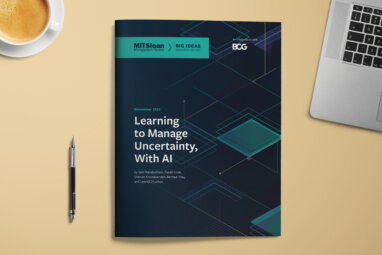Sharing Supply Chain Data in the Digital Era
Effectively managing and coordinating supply chains will increasingly require new approaches to data transparency and collaboration.
Topics
There has been plenty of discussion in the mainstream business press about how digital technologies are transforming companies’ business models and customer-facing activities. But what’s discussed less widely is how those technologies are also transforming companies’ supply chains.
We believe that supply chains in coming years will become even more “networked” than they are today — with significant portions of strategic assets and core capabilities externally sourced and coordinated. This will be powered by two trends. First, as digital advances continue to reduce communication and coordination costs, companies will find it easier and more efficient to secure external solutions rather than inventing solutions in-house. Second, companies will find it increasingly challenging to sustain best-in-class internal supply chain competencies across a diverse set of emerging digital technologies that range from the “Internet of Things” to sophisticated artificial intelligence algorithms.
Effectively managing and coordinating tomorrow’s networked supply chains will require organizations to develop and adopt more structured collaboration models — scalable approaches to enabling true data transparency and frictionless cocreation that are largely absent in today’s collaboration models.
In particular, access to transparent, accurate data is a prerequisite for effective supply chain collaboration and coordination. Lack of transparency is often born from a lack of trust or confidentiality issues. But we are already seeing progressive companies developing novel solutions to this dilemma — such as data “cleanrooms” and digital marketplaces.
What we call data “cleanrooms,” often managed by a third party, allow the sharing of sensitive data (for example, consumer demand, product cost breakdown, and asset utilization) in a legal and secure data environment that lets participants better identify and size opportunities for joint value creation.
Companies can also use a digital marketplace to transform supply chain dynamics within their own units.
A.T. Kearney recently helped build a cleanroom for a global fast-food chain and its key capital equipment vendors. The chain shared forecasted future demand and outlet expansion data. Capital equipment vendors provided data about topics such as their global manufacturing footprint and total landed cost for products. This integrated data environment provided a more accurate view of how a fully optimized supply chain of the future would look and the size of the potential prize, while protecting all parties’ sensitive margin and cost information.





